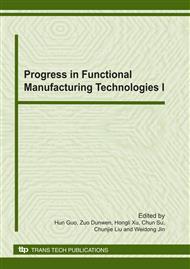p.143
p.149
p.155
p.161
p.167
p.173
p.179
p.185
p.192
A Capillary Model for Gasesas Coolant and Lubricant in Metal Cutting
Abstract:
The gases of nitrogen, oxygen, argon and carbon dioxide were employed as coolant and lubricant in metal cutting. Therefore, the smaller kinetic diameter of gas, the lower cutting forces can be obtained. A conical capillary model is proposed, based on the experimental results and the theory analysis of stress distributions at the tool-chip interface. According to the boundary-layer theory, the kinetics equations of gas flow were solute. The velocity and flux of gas molecule are presented. In the capillary, the adsorption of tool-chip interface results in boundary lubricating film; the conical shape of capillary limits the depth of coolant and lubricant penetrating; and the negative press is the motility for coolant and lubricant penetrating. The study results show the molecule size of the coolant and lubricant could effect on its performances, and the coolant and lubricant with a relatively small molecule may have the particularly effective nature, in metal cutting.
Info:
Periodical:
Pages:
167-172
Citation:
Online since:
December 2010
Authors:
Price:
Сopyright:
© 2011 Trans Tech Publications Ltd. All Rights Reserved
Share:
Citation:


